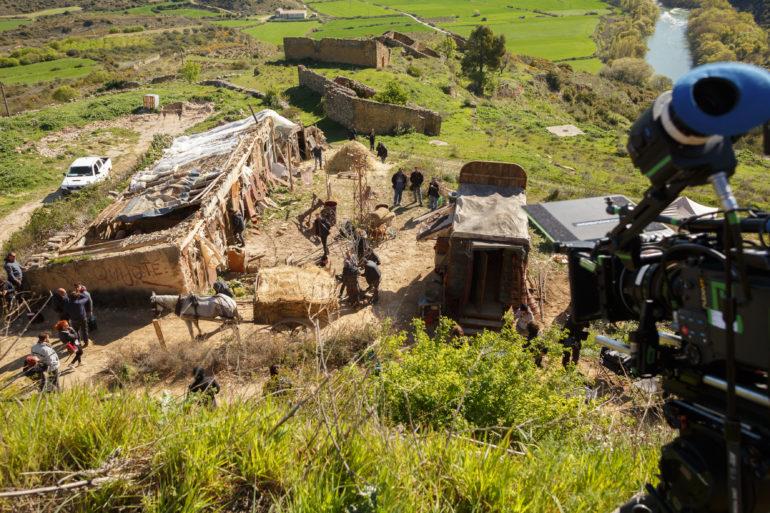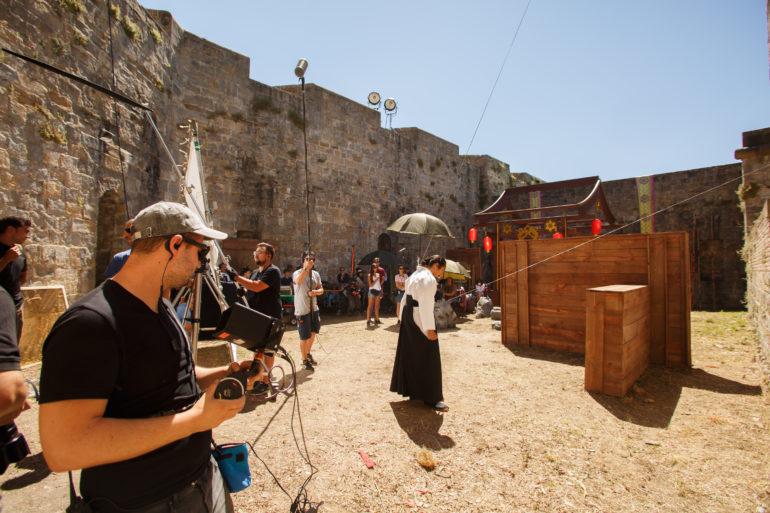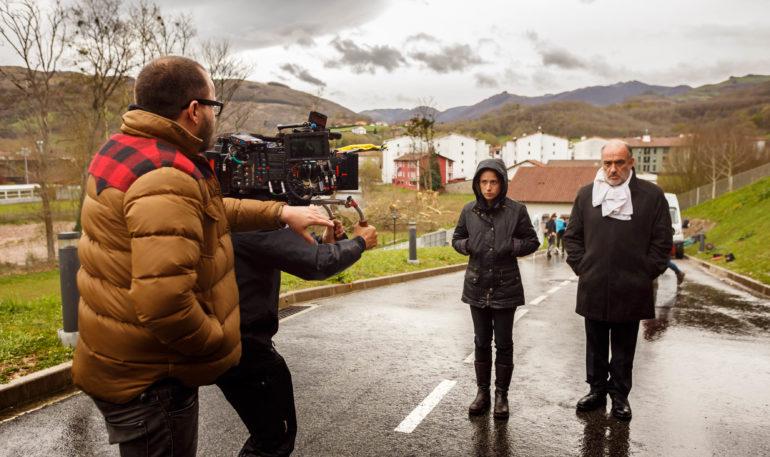Conecta Fiction: Spain’s Navarre Primes Film-TV Gameplan
By Emiliano De Pablos
LOS ANGELES (Variety.com) – MADRID — Navarre has been a long-term film and TV shooting locale thanks to diverse and sometimes stunning landscapes that take in the Bardenas Reales badlands, immortalized in titles such as “The World Is Not Enough” and “Game of Thrones.”
One of Spain’s richest regions, Navarre has historically levied its own tax regime, which led in 2015 to its launching a highly competitive 35% tax credit for shoots which spend at least 40% of their budgets in the territory.
Once the incentive became part of Navarre’s film-TV mix, it started to generate larger economic activity around the audiovisual industry, and see high-profile national companies such as Tornasol Films and Nostromo Pictures choose Navarre as a preferential locale.
Gerardo Herrero’s Tornasol, for example, shot Terry Gilliam’s Cannes Festival closer “The Man Who Shot Don Quixote” in the towns of Galipienzo, San Martín de Unx and Lerga; Nostromo filmed feature adaptations of Dolores Redondo’s bestselling rural thriller novels “The Baztán Trilogy“ in the Baztán Valley.
Last year, the Navarra Film Commission served 95 film, TV and commercials productions, of them 28 features, up 25% over 2017.
In parallel, the region has started to attract animation and post-production firms, driven by a 40% tax deduction for R&D investment. Among them, Apolo Films, the producers of animated feature “Dogtanian and the Three Muskehounds,” and New Gravity Laws, which serviced post-production on “The Swallows of Kabul,” another animated feature which screened last month in the Cannes Festival’s Un Certain Regard.
“Audiovisual has become a key focus of Navarre’s creative and digital industries sector, a strategic axis of the region’s Plan of Smart Specialization 2030,” says Javier Lacunza, general manager of Navarre Culture, Sports and Leisure.
The reasons, Lacunza explains, are its high impact on employment, a high added value and its technological components.
At the end of 2018, the region simplified access to the incentives, replacing the tax vehicle Agrupación de Interés Económico (Economic Interest Grouping) -widely used in Spain from 2007- by a Sociedad Limitada (limited society) model, also benefiting companies that take their whole infrastructure to the region. “We want to encourage stability,” Lacunza says.
“Once the Limited Society model was totally established, it will make it easier to co-produce with Navarre,” he adds.
For the moment, “Navarre’s tax system is more competitive for Spanish than for foreign productions,” says Nostromo founder Adrián Guerra, a specialist in international productions and services.
International companies need to team with Navarra-based producers to access region-specific tax advantages. Another option is to use in Navarre a 20% tax deduction for filming foreign productions available all over the Spanish mainland.
“The Man Who Killed Don Quixote,” a Spain-France-Belgium-Portugal co-production, used two Pamplona-based tax vehicles that channeled private investment into the project.
Nostromo teamed with Atresmedia Cine and Germany’s Nadcon Film to produce in 2016 “The Invisible Guardian,” the first installment of “The Baztán Trilogy,” followed by “The Legacy of the Bones” and “Offering to the Storm,“ both simultaneously lensed over 2018-2019.
The region offers multiple locations, taking advantage of its landscape, and range of bio-climate, architecture and culture.
“’The Baztán Trilogy’ is boosting film tourism in the Valley, in the North of Navarre, where the story takes place, allowing fans to associate landscapes with fiction,” says Sara Sevilla, Navarra Film Commission coordinator.
“In the case of the Bardenas Reales desert, running down into the Ebro Valley, every film has given it a difference significance, including Mars, Afghanistan or the U.S.-México border,” she adds.
Pamplona bulls-runs, part of Navarre cultural identity, were filmed for nine days during last year’s Sanfermines for “Line Walker: Operation Midnight Shadow,” a sequel to the action-thriller “Line Walker,” a Shaw Brothers Hong Kong production which scored $90 million at the Asian box office in 2016.
The St. James’ Way, another emblematic location, was key for features such as “The Way,” a Filmax production directed by Emilio Estévez, and German box office hit “I’m Off Then,” a comedy that also generated fanboy pilgrimage.
“The region has started [growing] in a big way, not only in terms of film and TV incentives but also in infrastructure services for industry,” says Geraldine Gonard, director of Conecta Fiction, the TV drama co-production forum, whose third edition runs June 17-20 in Pamplona.
Built on the business campus of Lekaroz, Melitón Studios – whose facilities takes in two sound stages, covering a total 809 square meters (8,700 square feet), plus catering and accommodation services – will kick-off operations in the summer.
Meanwhile, the new studios hosted in early June a 10-day immersion workshop led by double Oscar-winner Iranian director Asghar Farhadi.
“Navarre is rich in history, landscapes and traditions. Looking at the future, the aim is for the audiovisual industry, beyond a substantial impact on GDP, to tell stories that contribute to building a regional brand,” Lacunza says.



